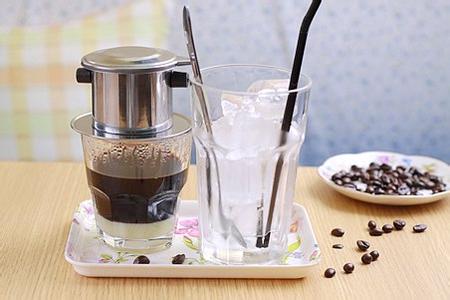Basic knowledge of high-quality coffee matters needing attention in the purchase of coffee beans

To start buying coffee beans, first choose a coffee shop where business is booming. The freshness of roasted beans is the life of coffee, so choose a warehouse for fresh coffee beans, a clean place with no oil residue from old beans and shops with no direct sunlight and no high temperature around. It is also a good way to buy in a self-baking store that you think is fragrant and mellow. When buying baked beans, you can specify the refreshing beans by yourself. if you want to drink some slightly sour ones, the bitter ones are better, or directly tell the clerk to choose for your preferences.
When buying rear care shop grinding, be sure to inform the manager of the coffee making utensils used to match those props grinding (such as electric coffee maker, filter, paper, siphon, etc.).
When buying canned coffee powder in the supermarket, choose the label (the type of beans or the tendency to taste, etc.), depending on what you like.
Gaseous packaging
In the most common packaging, beans and powder are packed in empty cans, glass, paper bags or plastic containers, and then sealed or sealed. The preservation is low, and because it is in contact with the air all the time, it needs to be drunk as soon as possible for about a week.
vacuum packing
The packing container (can, aluminum foil bag, plastic bag) draws out the air from the container after filling the coffee. Although it is called a vacuum, it actually removes at most 90% of the air, and the surface area of the coffee powder is larger than that of the coffee beans, and even the remaining air can easily combine with the powder to affect the flavor.
Gas filling packaging
A pinhole is designed on the metal bag. After filling the coffee, inactive nitrogen is poured into the bag and the carbon dioxide in the bag is squeezed out of the pinhole. This method is more popular, but after all the gas is discharged, the oxygen is quietly drilled back into the bag from the pinhole.
Gas sorbent packaging
Put the absorbent made of deoxidizer and decarbonate into the bag, the air in the package can be easily absorbed, and the carbonation produced by the coffee can also be inhaled, but the aroma of the coffee will also be sucked away is its disadvantage.
UCC Asia Rome Packaging
At present, it is the most ideal outer packaging of coffee, all in the shape of beans rather than powder. It is similar to the pinhole metal bag, except that the gas in the bag can be discharged through the pinhole, while the unidirectional piston can prevent the oxygen from entering the bag.
Immediately after the beans are roasted, the coffee manufacturers cool the beans and pack them, pour nitrogen into the bag and discharge the gas from the bag. Although this kind of packing method is ideal, but the material is expensive, the cost is high, at present only the selected coffee of large companies will use this kind of packaging method.
Important Notice :
前街咖啡 FrontStreet Coffee has moved to new addredd:
FrontStreet Coffee Address: 315,Donghua East Road,GuangZhou
Tel:020 38364473
- Prev

A container for storing coffee beans.
Generally speaking, coffee beans are stored in containers with rubber pads on the inside of the lid. Roasted coffee beans are easy to smell and absorb the surrounding odor, so sealed bottles and cans should be used to preserve coffee beans. Contact with air will accelerate the oxidation of coffee beans. With the decrease of coffee beans, the gap in the container becomes larger and larger, and some materials such as cotton should be filled into the container.
- Next

The composition of coffee the basic knowledge of coffee beans
Caffeine: caffeine is the most eye-catching of all the ingredients in coffee. It belongs to a kind of phytoxanthine (animal muscle component) and has the same properties as theobromine in cocoa and theophylline in green tea. The percentage of reduction after baking is very small, and the effect of caffeine is very extensive. It will affect the brain, heart, blood vessels, gastrointestinal tract, muscles and kidneys of the human body, and the right amount of caffeine will
Related
- Beginners will see the "Coffee pull flower" guide!
- What is the difference between ice blog purified milk and ordinary milk coffee?
- Why is the Philippines the largest producer of crops in Liberia?
- For coffee extraction, should the fine powder be retained?
- How does extracted espresso fill pressed powder? How much strength does it take to press the powder?
- How to make jasmine cold extract coffee? Is the jasmine + latte good?
- Will this little toy really make the coffee taste better? How does Lily Drip affect coffee extraction?
- Will the action of slapping the filter cup also affect coffee extraction?
- What's the difference between powder-to-water ratio and powder-to-liquid ratio?
- What is the Ethiopian local species? What does it have to do with Heirloom native species?

